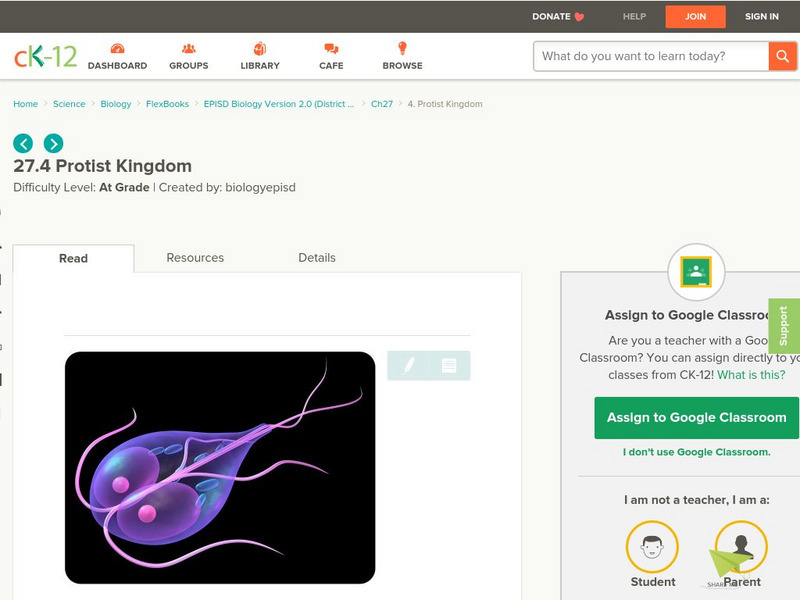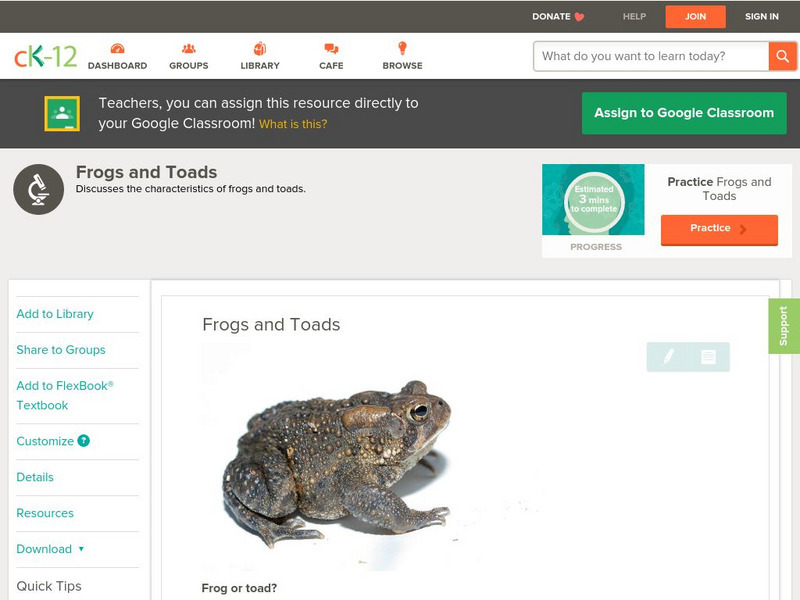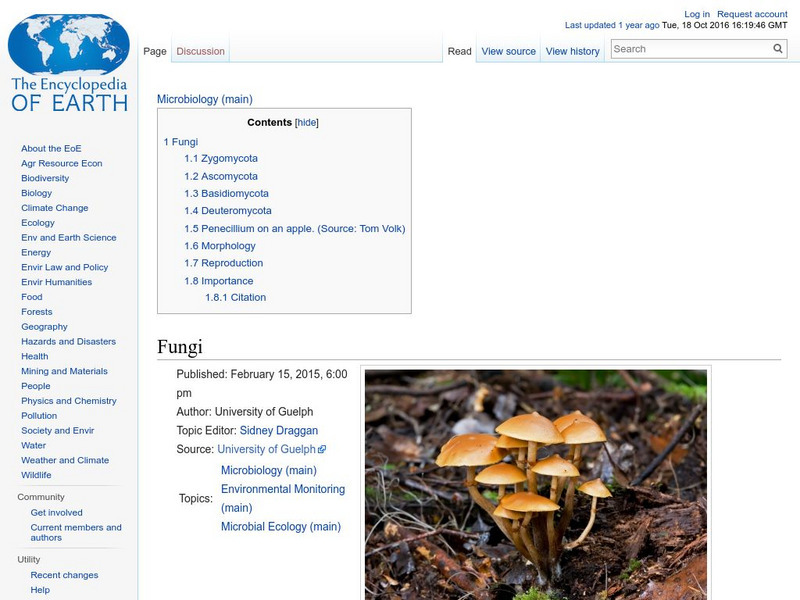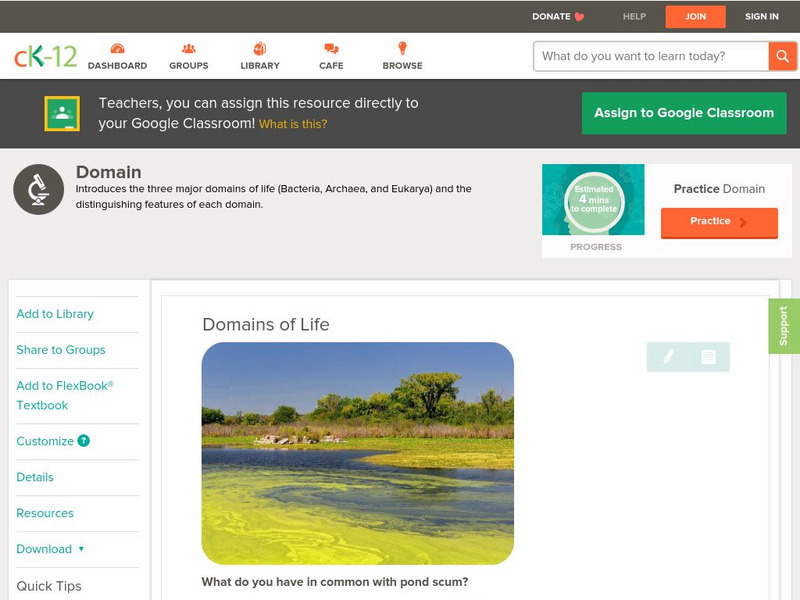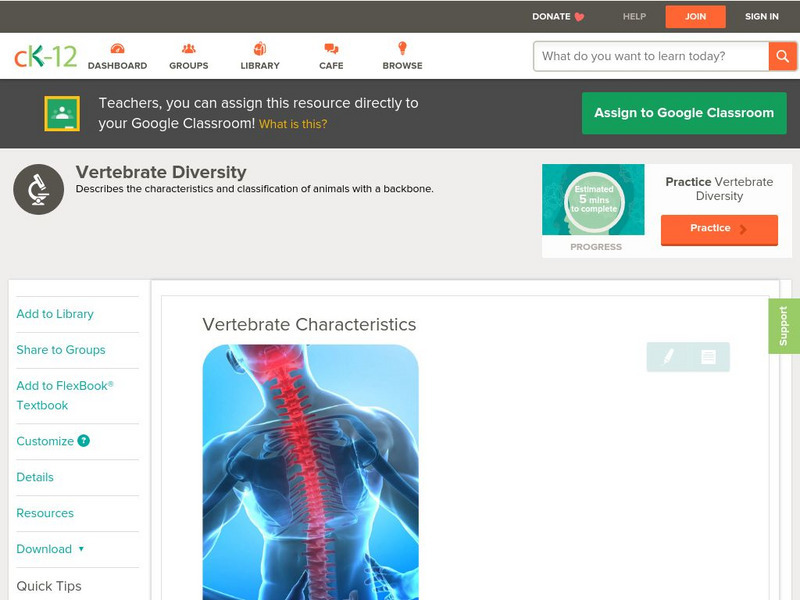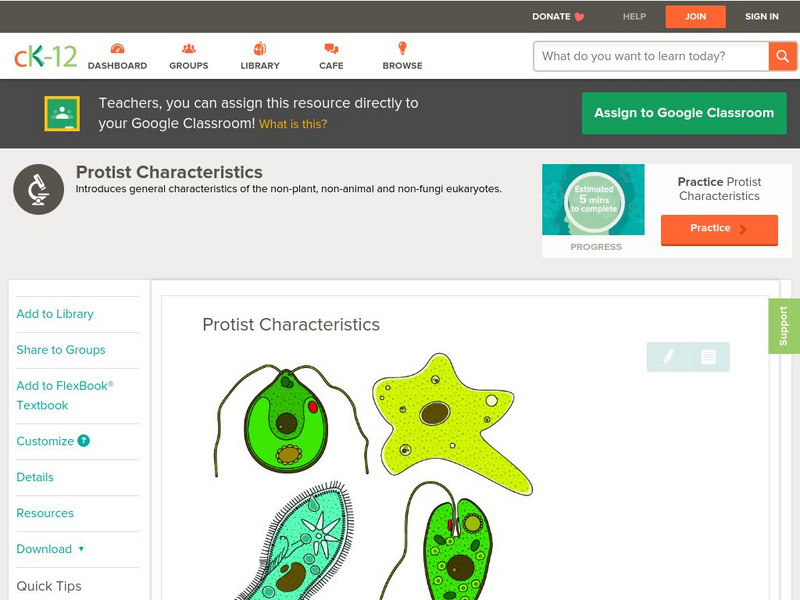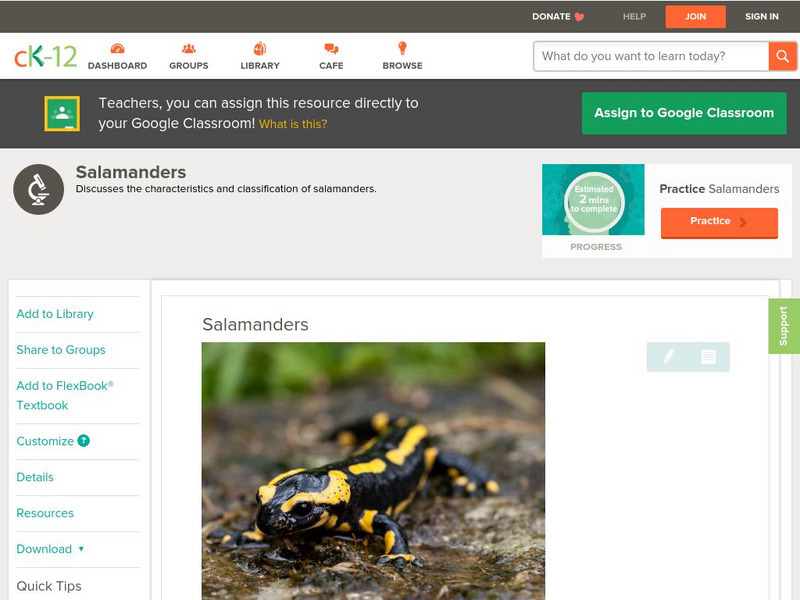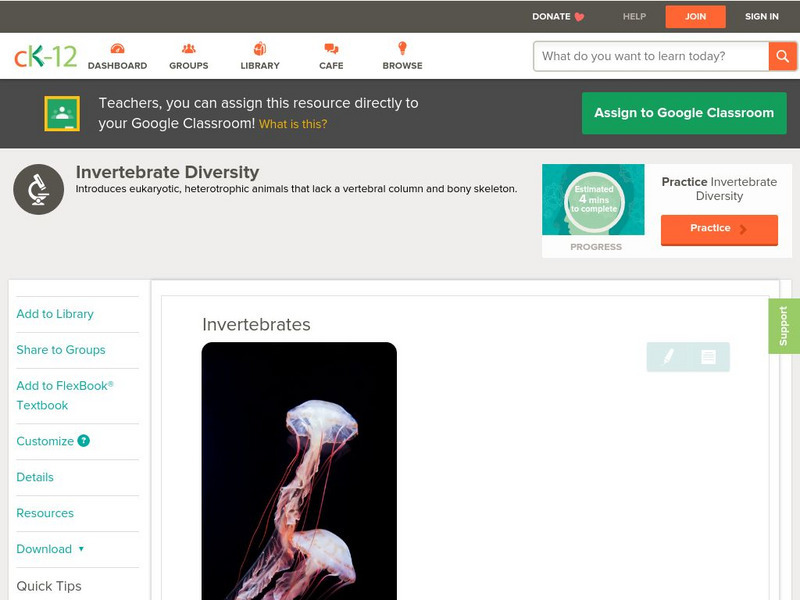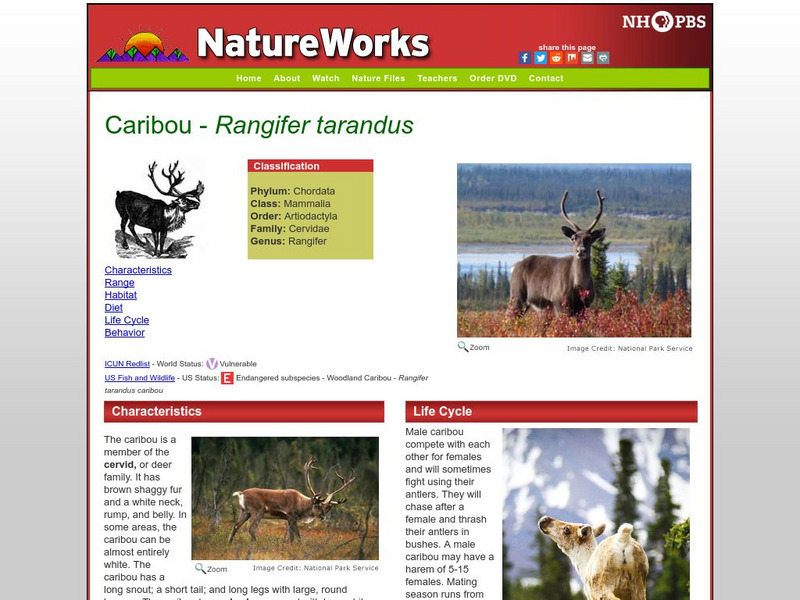Hi, what do you want to do?
CK-12 Foundation
Ck 12: Episd: Prokaryote Evolution
[Free Registration/Login may be required to access all resource tools.] Discover three ways to classify cells and understand what prokaryotic cells are.
CK-12 Foundation
Ck 12: Episd: Protist Kingdom
[Free Registration/Login may be required to access all resource tools.] Discover the classified diverse kingdom of protista in this module.
CK-12 Foundation
Ck 12: Episd: What Are Biomes?
[Free Registration/Login may be required to access all resource tools.] Students will consider the influences that create different biomes. Recognize and classify the types of biomes.
CK-12 Foundation
Ck 12: Life Science: Frogs and Toads
[Free Registration/Login may be required to access all resource tools.] Frogs and toads are amphibians in the order Anura. In terms of classification, there is actually not a big difference between frogs and toads. Learn more about frogs...
Other
Mammals and Their Babies
Twelve mammal baby pictures are displayed in this resource. If you roll your mouse over a picture you can see the adult version of the same animal.
Encyclopedia of Earth
Encyclopedia of Earth: Microbiology: Fungi
Explains what fungi are, the different classification groups, their morphology, how they reproduce, and their important place in the biological world. (Published: December 23, 2008)
CK-12 Foundation
Ck 12: Episd: Animal Characteristics
[Free Registration/Login may be required to access all resource tools.] Students will be able to identify and classify organisms that are animals based on recognition of traits presented.
CK-12 Foundation
Ck 12: Life Science: Domains of Life
[Free Registration/Login may be required to access all resource tools.] Humans are in the same domain as trees and algae. What could they possibly have in common? It is the location of their DNA inside their cells. Their cells all have a...
CK-12 Foundation
Ck 12: Life Science: Vertebrate Characteristics
[Free Registration/Login may be required to access all resource tools.] Vertebrates are animals with backbones. These include fish, amphibians, reptiles, birds, and mammals. Learn more about vertebrate characteristics in this learning...
CK-12 Foundation
Ck 12: Life Science: Amphibians
[Free Registration/Login may be required to access all resource tools.] Amphibians are a group of vertebrates that have adapted to live in both water and on land. Amphibian larvae are born and live in water, and they breathe using gills....
CK-12 Foundation
Ck 12: Life Science: Protist Characteristics
[Free Registration/Login may be required to access all resource tools.] Protists are eukaryotes, which means their cells have a nucleus and other membrane-bound organelles. Most protists are single-celled. Other than these features, they...
CK-12 Foundation
Ck 12: Life Science: Fungi
[Free Registration/Login may be required to access all resource tools.] Ever notice blue-green mold growing on a loaf of bread? Do you like your pizza with mushrooms? Has a physician ever prescribed an antibiotic for you? Learn more...
CK-12 Foundation
Ck 12: Life Science: Chordates
[Free Registration/Login may be required to access all resource tools.] Did you know that fish, amphibians, reptiles, birds, and mammals are all related? They are all chordates. Chordates are a group of animals that includes vertebrates,...
CK-12 Foundation
Ck 12: Life Science: Salamanders
[Free Registration/Login may be required to access all resource tools.] Salamanders are characterized by slender bodies, short legs, and long tails. They are most closely related to the caecilians, little-known legless amphibians. Learn...
Curated OER
Secondary Science Program: The Six Kingdoms
A short overview of the six kingdoms in our scientific classification system: Plants, Animals, Protists, Fungi, Archaebacteria, and Eubacteria. A good explanation of how organisms are placed in their particular kingdom.
Curated OER
Secondary Science Program: The Six Kingdoms
A short overview of the six kingdoms in our scientific classification system: Plants, Animals, Protists, Fungi, Archaebacteria, and Eubacteria. A good explanation of how organisms are placed in their particular kingdom.
Curated OER
Secondary Science Program: The Six Kingdoms
A short overview of the six kingdoms in our scientific classification system: Plants, Animals, Protists, Fungi, Archaebacteria, and Eubacteria. A good explanation of how organisms are placed in their particular kingdom.
Curated OER
Secondary Science Program: The Six Kingdoms
A short overview of the six kingdoms in our scientific classification system: Plants, Animals, Protists, Fungi, Archaebacteria, and Eubacteria. A good explanation of how organisms are placed in their particular kingdom.
Science Education Resource Center at Carleton College
Serc: Bioinformatics
This project is a series of interrelated modules designed to introduce the student to modern biological techniques in the area of bioinformatics. Bioinformatics is the application of computer technology to the management of biological...
CK-12 Foundation
Ck 12: Life Science: Invertebrates
[Free Registration/Login may be required to access all resource tools.] Animals are also often identified as being either invertebrates or vertebrates. These are terms based on the skeletons of the animals. Vertebrates have a backbone...
TED Talks
Ted: Ted Ed: The Evolution of Animal Genitalia
Genitals are the fastest-evolving organs in the animal kingdom. Menno Schilthuizen explains how the evolutionary biology of nature's nether regions uncovers a hidden world of seduction, conflict, and rivalry.
Other
Pelagic Shark Research Foundation: Evolution of Sharks
Decent overview of the sharks place in the geologic history.
PBS
Nh Pbs: Nature Works: Caribou
The focus of this NatureWorks resource is the Caribou. The content includes a look at this species' characteristics, range, habitat, food, reproduction, and behavior.
George Washington University
George Washington University: Basics of Cladistic Analysis [Pdf]
This is an advanced level review of cladistic theory and methodology. Some sections are very dense but there are useful sections for teachers and students seeking a better understanding of the topic.






